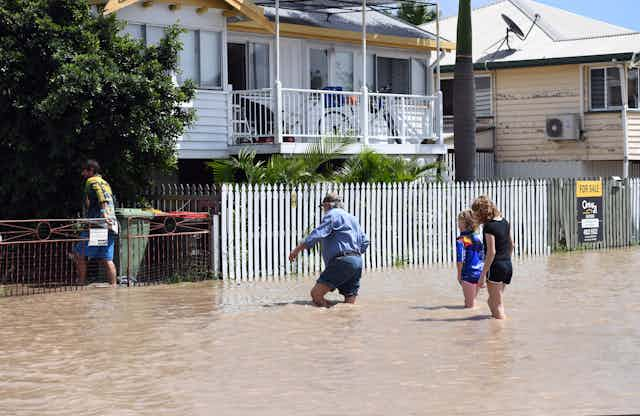As communities recover from the havoc wreaked by Cyclone Debbie, it’s time to accept that disasters will become more intense due to climate change and the cost of insurance will continue to rise.
Insurers have a unique insight into the risk and costs associated with climate change. If insurers better informed households about the terms and conditions of insurance and the potential costs of what’s not covered, consumers could help mitigate the risks themselves.
Insurers could also share data with government on how building and changes to infrastructure affects premiums. This would avoid surprises after a disaster hits.
Where insurance products are unaffordable, or cover unavailable, it’s often governments left to foot the bill. Since 2009, this has amounted to more than A$12 billion.
When governments can no longer afford the exorbitant clean up costs, the homeowner (or residents, in the case of renters) will be left with little recourse.
Rising premiums
The insurance industry is expecting premiums to be equal to 38% of annual income by the year 2100 for affected households. We are also starting to see a huge disparity in the cost of insurance between high and low risk areas.
Insurance premiums in Northern Queensland are already more than double that of Brisbane due to climate risk, for instance. Exorbitant costs of insurance may result in consumers being unable to afford cover.
To reduce these premiums, more adaptation and mitigation measures are critical.
One example of this is the partnership between insurer Suncorp and James Cook University to analyse data on insurance claims and to beef up cyclone protection by retrofitting homes. This partnership has reduced the cost of some insurance premiums.
The Productivity Commission inquiry into climate change adaption supported “market led adaptation”. This is in part premised on the insurance sector providing “price signals” - noting the costs via year to year for insurance premiums for various risks, so that consumers can adapt.
It would also be easier for consumers to adapt if the information about their coverage, beyond prices, was clearer. As noted in the Queensland Flood Inquiry report commissioned after the catastrophic flooding in 2011, insurers can help by using plain language in their insurance products. This includes in Product Disclosure Statements, particularly on what types of “flood” are covered.
Data to protect home owners
If there was a centralised, and freely available, source of climate risk data it would be easier to ensure consumers, government and insurers were all working on the same assumptions.
There is already some spatial data freely available, including by the CSIRO, via CoastAdapt, and even with local councils such as Lake Macquarie.
There is perhaps potential for the current Productivity Commission inquiry into data sharing to specifically consider data relating to climate risk. For example, the spatial data in the National Interest Dataset could be used to provide consistent, reliable and free data to consumers prior to their decision to live or to build in high risk locations.
This data is important for risk forecasting and planning by the public and private sector (including insurers) in order to avoid up to US$100billion of uninsured losses, due to natural disasters worldwide.
Land use and development
How we develop or build on land is critical for how insurers will price premiums.
Australians have a history of, and perhaps an affinity for, building in high risk locations, and then rebuilding there when disaster strikes. While some insurers are recognising the economic benefits of acting early by installing flood levies in some Queensland towns, relying on wall building might not produce the results the community expects.
It can result in communities feeling protected by a wall that may not withstand future climate risk. A better approach is to implement climate adaptation measures early.
Law courts have been tasked with considering the impact of climate risk into administrative decision making for close to a decade. Cases in New South Wales, Victoria, and Queensland demonstrate the importance of a relevant decision maker properly factoring climate risk into development and land use planning decisions.
There are some instances where land use planning properly factors in climate risk. For example, in New South Wales previous land use decisions have allowed people to build close to at risk shorelines, or to place temporary works to protect homes during severe events. Now these are undergoing reform to include new laws which take into account expected future sea levels.
Getting reading for future events
As observed in the Productivity Commission inquiry into natural disaster mitigation, insurers can and need to do more to inform households on their policies, the natural hazards they face, and the indicative costs of rebuilding.
A wider availability of spatial data that quantifies risks to properties would assist home owners to be better prepared, but some of the responsibility lies with government as well.
It’s for local and state governments to determine whether, and where, rebuilding ought to occur.
Some of groundwork to improving all of these problems has already been set. The Federal Government setup a taskforce into insurance risks in Northern Australia, and the Productivity Commission has examined both barriers to climate change adaptation and mitigating the impact of natural disasters.
Governments need to play a central role. They must recognise the critical importance of a robust climate change mitigation and adaptation policy and then act on it. Only then will insurers get the signal for the need for change.

